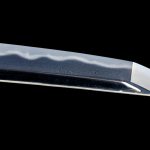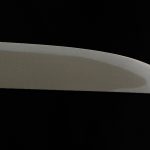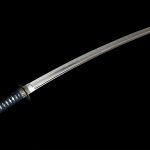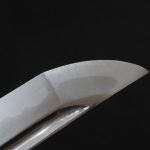
by Nicholas Wilson
“From youth my heart has been inclined towards (swordsmanship).” –Miyamoto Musashi
For as long as I can remember, swords have fascinated me. If there was a movie to watch, a book to read, or a game to play where swords were involved, you had my attention. Martial arts in general were of interest to me, but it was the sword and its functional use in swordsmanship that intrigued me most.
A random internet search in 2004 set me on the path of iaido when I was a 19-year-old college student. My interests were born out of that initial fascination, and the idea of learning how to wield a sword correctly was enthralling. Little did I know I would embark on a path that was ultimately about more than swordsmanship, a path that led to greater insights into both myself and the world at large.
As my sensei has often said: “there are many reasons to start a martial art, but few reasons to stay in it.” When you think of the martial arts, certain images might come to mind: sword duels, board breaking, flying jump kicks, and tremendous feats of resilience and dexterity (for me, it was sword fighting and swashbuckling). When I began my training in iaido, I had many fanciful ideas about that Japanese swordsmanship—budo—was all about. Boy, were those ideas wrong!
My initial attraction to iaido is not what keeps me coming to the dojo week after week and year after year. What started as a desire to learn “authentic” sword fighting developed into something more over time. This was primarily due to my realizing that budo is not always a practical or utilitarian pursuit. Almost no one uses swords to defend their lives anymore, which makes the martial applications of the Japanese sword even more fascinating to me. What nurtures my interest is the subtler aspects of my practice that not only aid me in my martial training, but enhance everything I do outside the dojo. The bottom line is that Budo offers a host of benefits not only related to fighting, but to every facet of life.
Learning As a Skill
“It is said the warrior’s is the twofold Way of pen and sword, and he should have a taste for both Ways. Even if a man has no natural ability he can be a warrior by sticking assiduously to both divisions of the Way.” –Musashi
There are many things budo can teach a person with regards to physical martial application, mind-body coordination, and proper behavior in a martial setting. Budo may teach you how to skillfully wield a sword or correctly throw a punch, but a hidden benefit is that it also helps you become a better learner. Specifically, you ‘learn how to learn.’ The skill of learning is arguably the most important and translatable skill you will develop in long-term martial arts practice. The visual and kinesthetic essence of budo enables you to do new things and add useful techniques to your repertoire, it enables you to unlock the process of skill acquisition in a step-by-step manner that can translate to other disciplines.
I noticed this connection when I first started learning a new skill: watercolor painting. While there are plenty of differences between painting and iaido, I found the manner in which you approach learning the fundamentals of each to be the same. I had a fairly in-depth art background in my childhood, so I thought learning watercolors would be easy. It wasn’t. Watercolor painting is said to be the most difficult painting medium because, unlike oil paints or digital media, you cannot hesitate with your brush stroke, nor can you go back and easily correct what you’ve already painted. What’s done is done. This concept, known in Japan as Ichi-go-ichi-e (this time only) was introduced to me while learning the Japanese sword, and naturally came to mind when I took up the brush.
Once I saw this connection with iai, there was a mental shift in the way I approached painting. It wasn’t that I was suddenly a more gifted painter, it was that the quality of my concentration had changed. I knew I only had one chance with my painting, and if I wavered in my decision making or judgement it would not come out the way I intended. Similarly, in martial arts the setup of a technique will determine whether or not it is effective. Without proper setup the technique will fail or, at best, not work as well as it could.
Martial arts demand laser-like focus if you are to improve, which fosters immersive learning that is both cognitive and sensory. Watching your sensei and attempting to move as they do not only tells you what you are doing wrong and what you are doing right, it demands that you distinguish the essential from the superfluous by using both your senses and reason.
When you are able to see and apply the correct form in your waza (technique), you are better able to identify it in others and you will know if it is missing in someone’s practice. Mental lapses and losing focus are suki (weaknesses), and they are something you learn to identify in others because, firstly, you have learned to identify them in yourself. Distractions, both internal and external, will eventually occur and test your focus.
The act of learning the physical techniques is one of the more obvious practical elements to learning a martial art because it is what most people see. In truth, I have come to find that the examination of my own character, its weaknesses as well as its strengths, is the true underlying benefit of the process. As such, this leads to developing another important skill: awareness.
Building External and Internal Awareness
“Pay attention, even to trifles.” –Musashi
The next time you are making your daily commute or find yourself in a crowded place, take a look around. What are the other people doing? Are they slouched over their smartphones with their noses buried in their screens? How is their posture? Are they constantly bumping into objects or other people? Most importantly, are they even aware you are watching them?
This must not be overlooked. Actually knowing what is going on around you- being physically and spatially aware- is not only a useful skill to have in the dojo, it is critical in everyday life. It was certainly critical on the battlefield in feudal Japan. If a swordsman did not have fine-tuned senses how could he ever hope to prevail over the enemy? Questions like: How close is teki (enemy)? How many steps must I take to reach him? What is teki’s reach? What if teki’s reach is greater? How much time do I have to cross this distance? These are just a few of the questions budo teaches you to ask as you attempt to master time and space.
Budo, especially weapon arts, can be said to inject a healthy dose of reality. Using iaido as an example, shinken (sharp swords) are relatively common at higher levels. Those who use shinken quickly find themselves reminded of the dangers inherent in the art. Without proper instruction, a sharp sword is exceedingly dangerous because the edge is unforgiving. Paradoxically, this danger is a good thing for learning. Unless you pay diligent attention and are mindful of your body and the sword, you will cut yourself. This may seem gruesome-it surely can be-but it is a fundamental element of the art and ultimately a helpful learning tool in building self-control, focus, and overall awareness.
As a framework, your awareness, internal state, and mental attitude are not only crucial to budo training, they are crucial to every decision you make in your waking life. Striving to do a technique correctly and consistently is not only vital to improving in your martial art, it also requires quieting the mental chatter in a practice similar to meditation. By focusing on the task at hand and limiting distractions, one can have profound insights into their own character as well as improved performance in the day to day life.
Developing a Sense of Community and Friendship and Promoting a Healthier Lifestyle
“Get beyond love and grief: Exist for the good of Man.” –Musashi
Research increasingly reveals people in the modern world feel more disconnected and isolated than ever before. This discovery comes with a bit of irony since technology has granted us instant communication with anyone on the planet at any time. I’m writing this article in Louisiana! Despite this instant global connection, people are more unhappy than they used to be. It is a sad fact that most adults in the United States view martial arts as a pursuit relegated to either professional fighters or children. Those ideas are at opposite ends of an extreme spectrum, and they do not allow room for the vast number of people who incorporate a martial art into their daily lives long-term.
Through my own pursuit of iaido I have formed some of the strongest friendships of my life and I have had the privilege of being exposed to many different, interesting ways of thinking. Look at any other budoka across the world and you will likely hear the same proclamation- budo builds bonds between people. Why is that? Anyone who has seriously studied a martial art for any length of time can attest it is very challenging. Every martial art provides its own set of challenges, and each person will have some additional unique hurdles to overcome. This process of overcoming is why I believe bonds between martial artists are so strong–because martial arts are hard, and because no matter how good you are there is always more to learn. No amount of training can be said to be ‘enough.’
Therefore, the pursuit of mastering something difficult is an idea that transcends custom and culture and brings people who take up the practice of budo together. Striving in a difficult endeavor and improving as a group creates bonds that can last a lifetime and can keep adherents vital and lively deep into their twilight years.
Take a look at the sheer number of senior practitioners in Japan, especially in kendo and iaido. It is not uncommon to see practitioners in their 60s, 70s, 80s, and beyond. What other practice has such a high number of senior practitioners still participating at the highest of levels? Stripping everything else away, budo brings an element of vitality to everyday life that is hard to find anywhere else. The benefits of belonging to a long-lasting community has been studied for over 50 years as evidenced in what researchers call “blue zones.” Among a handful of populations, the Japanese and the Okinawans specifically are among the longest lived peoples (Buettner, 16). There are many factors that have been said to contribute to this longevity, factors including diet, exercise, and lifelong friendships. As defined by Buettner, the factors are often associated with the term “ikigai”, which roughly means “reason for living” (16).The various factors that bestow their longevity are many—diet and exercise are a couple of examples.
Remember
“Step by step walk the thousand-mile road.” –Musashi
Make no mistake, all of the benefits discussed above can have a tremendous impact on your involvement in budo and on the rest of your life. However, these benefits are what my sensei calls “side-effects.” I interpret this as: any benefit derived from a martial art, no matter how esoteric, comes from a serious effort to stay true to the original intent. This is especially true in older budo styles, or koryu. The purpose and goals of each school are unique, but budo in general and iai in particular, descend from a time when people used these techniques in defense of their very lives. That was the foremost purpose of the art, and should be kept in mind every time you set foot in the dojo. No one who practices long term can deny, however, that the “side-effects” of involvement in budo today are nothing short of life-changing.
Citation
Buettner, Dan. “The Secrets of Long Life.” National Geographic, November 2005, pp.16.








